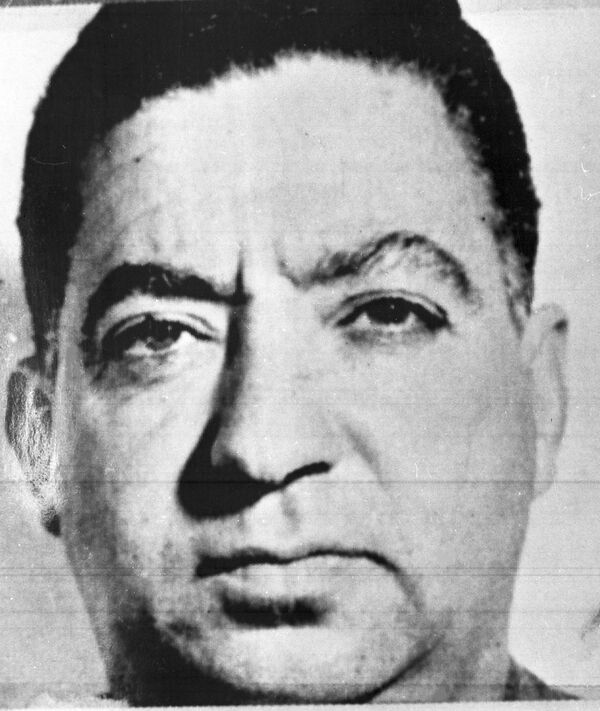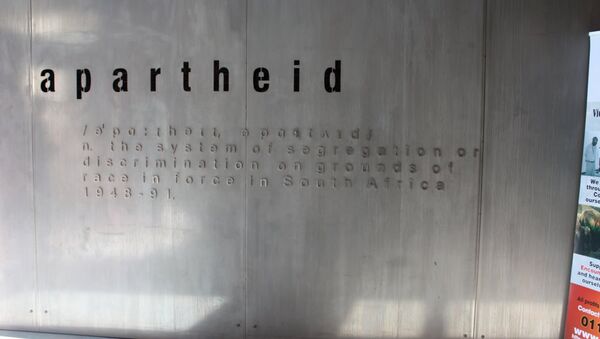South Africa's Minister of Justice, Michael Masutha, has been urged to "correct the historical record" regarding the assassination of Hendrik Verwoerd — often seen as the "architect of apartheid" — in September 1966.
Verwoerd was stabbed to death in the Parliament in Cape Town by Dimitri Tsafendas, a "passionate communist" from the neighbouring Portuguese colony of Mozambique, who had managed to obtain a job as a parliamentary messenger despite being banned from the country.

His assassination shocked the country and Harris Dousemetzis, the author of a new book — The Man Who Killed Apartheid — said the establishment reacted instinctively and labelled him a madman, covering up his political affiliations and denying he had been motivated by his abhorrence of apartheid.
"When he was interrogated by the police, they found out he was a member of the South African Communist Party and fought with the communists in the Greek civil war. He was banned from South Africa and the Portuguese secret police (PIDE) had a file on him since 1938 when he had been distributing communist propaganda in Mozambique," Mr. Dousemetzis told Sputnik.
The tiny white majority — which was mostly Afrikaner but included a large number of English-speakers — had dominated the black majority, which made up around 87 percent of South Africa's population since the 19th century.
But in 1948, the National Party defeated the more moderated United Party and began to introduce policies to formalise apartheid — white, black, Indian and coloured communities would all live separately and would not be allowed to intermarry. But the whites would have all the best land and the blacks would be deprived of education and be forced to labour for, and serve the white elite.
For decades the British, US and other western governments took no action against the apartheid regime, seeing it only as a bulwark against communism in southern Africa.
It was only in the 1980s that the plight of South Africa's black majority and that of its imprisoned leader Nelson Mandela became an issue in the West.
In his autobiography, The Long Road to Freedom, Mandela described his shock when news reached his prison on Robben Island of Verwoerd's assassination at the hands of a lone wolf who had no connections with the African National Congress.
Mr. Dousemetzis said he unearthed the initial statements Tsafendas made to police in the South African national archives while researching the book.
"Every day you see a man you know committing a very serious crime for which millions of people suffer. You cannot take him to court or report him to the police because he is the law in the country. Would you remain silent and let him continue with his crime or would you do something to stop him? You are guilty not only when you commit a crime, but when you do nothing to prevent it when you have the chance," said Tsafendas.

"The police found out he was politically active and he told them he killed Verwoerd because he was disgusted by his policies and believed a change of policies would take place. Tsafendas said he did not view Verwoerd as the real representative of all South African people," Mr. Dousemetzis told Sputnik.
Tortured and Threatened With Death by South African Police
The police began to torture Tsafendas — whose Greek anarchist father had emigrated to Mozambique before the First World War — and he cracked.
"He was severely tortured. He was electrocuted but worst of all he was taken to a cell, had a hood put over his head and was placed on a chair with a rope around his neck. He was convinced they were going to hang him and make it look like suicide," Mr. Dousemetzis told Sputnik.
In 1961 David Pratt, who had tried to assassinate Verwoerd the previous year, was found hanging in his cell and Tsafendas was convinced he would face the same fate unless he changed his story.

Tsafendas came up with a story — which he had heard from an American he had met during the Second World War — about being convinced there was a tapeworm inside him which was controlling his thoughts. Nowadays it would be described as schizophrenia.
Tsafendas hoped an insanity plea would not only save his life but also mean he could escape or be released early.
#SACP Nzimande: We must systematically eliminate the legacy of colonial domination and apartheid oppression and rollback imperialist exploitation. #PeoplesManifesto #ANC107 #ANCManifesto
— SACP (@SACP1921) 12 January 2019
The South African authorities happily accepted Tsafendas' new version of events, which was given at his trial and snapped up by the foreign press.
Tsafendas was sent to prison and vanished off the face of the Earth, unlike ANC leader Nelson Mandela who was to emerge from jail in 1990 and go on to lead the country as its first black president in the post-apartheid era.
Even after Mandela became president, Tsafendas remained in custody and he died in a psychiatric hospital in 1999.
"But he was not insane, he never had been. It had all been a ruse. He was lucid and sane right up to the end of his life," Mr. Dousemetzis told Sputnik.
Mr. Dousemetzis first heard of Tsafendas in 1999 when he read his obituary and 10 years later he decided not only to write his biography but to try and get the South African authorities to rewrite the record books.

So before the book was published he handed over a 2,200-page report to Mr. Masutha, which contained all the evidence he had gleaned about Tsafendas.
Veteran lawyer George Bizos, who was one of Nelson Mandela's lawyers at the Rivonia trial, said Dousemetzis' report was "monumental."
"I have never seen anything like this before. It is a mammoth enquiry into the steps taken by the government to declare him mad and to cover up his treatment. It's absolutely amazing what the government did," said Bizos, one of five jurists asked to give their opinion on the research.
Bizos said the evidence Tsafendas was not insane but politically motivated in killing Verwoerd was "overwhelming and unquestionable."
Mr. Masutha himself, when he attended the book launch in Johannesburg in November, said it was "a moment to celebrate the truth" about Tsafendas.
"Many South Africans suspected that there was a political cover-up in the Tsafendas case. The apartheid regime had two reasons for portraying Tsafendas to be insane. First, the regime wished to suggest that no-one in his right mind could kill such a wonderful leader as Hendrik Verwoerd. Secondly, there was the security aspect. The security apparatus, led by the Minister of Justice and Police, John Vorster, wished to avoid accountability for allowing a political revolutionary to be employed in a position close to the Prime Minister. So it was that the media and the legal proceedings were manipulated to present Tsafendas as a mentally deranged person dictated to by a tapeworm," said Professor John Dugard.
In 1948 the National Party won a whites-only election in South Africa and brought in a policy of apartheid. They remained in power until 1994.
Verwoerd became prime minister in 1958 and among the laws he pushed through Parliament was the Promotion of Bantu Self-Government Act, which set in place the so-called "bantustans" — supposedly independent black-ruled homelands such as Bophutatswana which were designed to remove many black South Africans from the best land, which remained in white hands.
White South Africans made up around 13 percent of the country's population but owned 80 percent of the land, including all the best farming and residential land.
Verwoerd and the National Party believed South Africa's were destined by God to rule over the black majority — what was known in Afrikaans as baaskap (bosshood) — and that the races should live separately and never intermarry, hence the 1949 Prohibition of Mixed Marriages Act.
"I say it unequivocally that the people of South Africa cannot accept the consequence of a multi-racial state unless the Whites, the Coloureds and the Indians are prepared to commit race suicide," Verwoerd said, in response to Harold Macmillan's 1960 "winds of change" speech.

"They stripped blacks of their rights and separated them in everyday life. Blacks were not allowed to use the same facilities and had no access to certain areas without a pass, which had to be approved by their employer. They became foreign citizens in their own land," Mr. Dousemetzis told Sputnik.
Verwoerd is buried in Heroes' Acre, a cemetery in Pretoria for Afrikaner leaders including Andries Pretorius and Paul Kruger.
After Verwoerd's assassination, John Vorster took over as Prime Minister and handed over to P.W. Botha in 1978.

Botha was succeeded by F.W. de Klerk in 1989 and he finally brought the curtain down on the apartheid regime, freeing Mandela and finally handing over power in 1994.
So did Verwoerd really kill apartheid?
"He did not kill apartheid but Verwoerd was a symbol of apartheid and when he was killed the first cracks appeared in apartheid. There was a major split in the National Party and a group went off and created their own party. Vorster was not as popular or powerful as Verwoerd and apartheid started weakening. Before his death it was unbreakable. South Africa's was the second most growing economy in the world after Japan and all western governments were co-operating with it. After his death the opposition started increasing," Mr. Dousemetzis told Sputnik.
The views and opinions expressed in this article by Mr. Dousemetzis are those of the speaker and do not necessarily reflect Sputnik's position.




